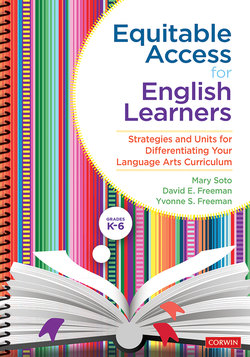Читать книгу Equitable Access for English Learners, Grades K-6 - Mary Soto - Страница 29
На сайте Литреса книга снята с продажи.
Understanding Language Proficiency
ОглавлениеOnce you have determined where students in your classroom come from and whether they speak, read, and/or write a language other than English, you should also consider their language proficiency in English. While you may be aware of most newcomers, you might not be aware of how well those students and other emergent bilinguals in your class understand, read, write, or speak English. We suggest familiarizing yourself with the levels of English language proficiency (or English Language Development) used in your state/district/school (see Figures 1.7 and 1.8).
The table below lists adaptations of English language proficiency categories from the TESOL International Organization (formerly the Teachers of English to Speakers of Other Languages), California’s English Language Development Standards, Engage New York’s EL and Native Language Speakers language progressions, the Texas English Language Proficiency Levels, and the WIDA (World-class Instructional Design and Assessment) language proficiency level descriptors. Complete descriptions of the categories appear on the websites of each of these organizations.
Figure 1.7 English Language Proficiency Categories and Descriptions
